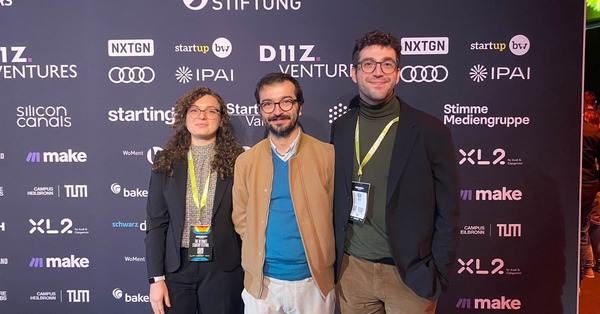Cyber Valley announces partnership with SPRIND
Redefining AI together

Cyber Valley and SPRIND have announced an exciting new collaboration that will drive the future of artificial intelligence innovation.
SPRIND, the Federal Agency for Breakthrough Innovation, funds groundbreaking projects, alternative approaches, and spin-offs. Through this new partnership, Cyber Valley and SPRIND will foster creative solutions beyond conventional paths.
This partnership seeks to explore next-level AI technologies, venturing beyond popular concepts like Large Language Models (LLMs), Transformers, and Diffusion Models. It will focus on championing alternative approaches to AI, encouraging bold thinking, and exploring uncharted territories. This collaboration signals a significant step toward redefining the possibilities of artificial intelligence.
Leading the charge for this initiative is Mirko Holzer, Innovation Manager at SPRIND, “This partnership is all about pushing boundaries and bringing bold ideas to life. With Cyber Valley, we are creating the perfect launchpad for disruptive technologies that have the power to reshape science and society.”
Florian Mayer, COO of Cyber Valley, shares the enthusiasm, “It’s fantastic to see SPRIND committing significant resources and funding to such a vital area of innovation. We are thrilled to join forces and pave the way for the next wave of groundbreaking AI technologies.”
Alternative approaches
Through this collaboration, SPRIND and Cyber Valley are looking for innovators who are working on new and alternative approaches to artificial intelligence (AI), transformative artificial intelligence (TAI), and artificial general intelligence (AGI). The goal is to find alternative, bold, even speculative ideas that diverge from established AI pathways such as diffusion models, large-scale language models, and/or generally transformer-based architectures.
The partnership supports visionary AI methods, emphasizing:
-
New Architectures: Energy-efficient designs inspired by biological systems, non-neural paradigms, quantum-inspired models, adaptive systems, and generative models simulating environments.
-
New Learning Paradigms: Innovative methods like federated learning, causal learning, reinforcement learning, active learning, and synthetic data ecosystems to redefine how machines learn.
-
New Hardware Approaches: Breakthroughs in neuromorphic, photonic, holographic, and biohybrid computing, as well as robotic systems with embodied cognition and sensory integration.
-
Innovations outside the mainstream: Bold ideas such as meta-learning, swarm intelligence, digital organisms, evolutionary algorithms, and AI systems with emotional and self-aware intelligence.
Company Information

Related Articles




